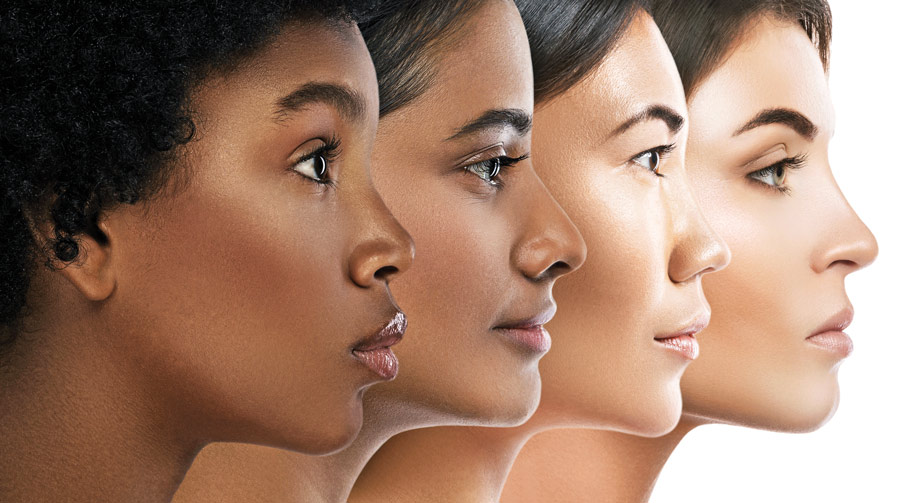Photo: JUN / ISTOCK / GETTY IMAGES PLUS
Getting out in the sun may feel good right now, but protecting your exposed skin with sunscreen is as important as ever. Luckily, new products and formulations not only shield you from the ultraviolet (UV) radiation that leads to skin cancer, but may help your skin in other ways, too. In part 1, we learn some surprising facts about solar rays and why protecting skin from a broader part of the spectrum is a groundbreaking focus of research. In part 2, we look at how the industry is making products better for you!
By Julie Bain, with additional reporting by Julia Langer
When it comes to sun protection, you mostly hear about ultraviolet (UV) light. But a major focus of research and development in the sunscreen industry is looking at protecting skin from other types of light as well. To understand how sunscreen works, and the direction research is heading, it’s important to know a little about the portion of the electromagnetic spectrum represented below.
Don’t be put off by the big words: electromagnetic radiation is basically just light. It comes as waves of different lengths, and we’re constantly bombarded by it. Only some of it is visible to our human eyes. A wavelength is the distance between two consecutive peaks of a wave of light. These tiny wavelengths are measured in nanometers (nm), each equal to one billionth of a meter. Different wavelengths along this spectrum affect the skin in different ways. Our chart shows the types of radiation from the sun that reach the Earth’s surface, with the shorter wavelengths on the left and the longer on the right. While there is no absolute consensus among scientists on the dividing lines between each section (it is a spectrum, after all!), many in the sunscreen industry agree on these numbers. So, follow along:
Approximate Percentages of Solar Radiation Reaching Earth’s Surface*
UVB
290 to 320 nm
Known for: Sunburn
UVB rays cause sunburn and damage to DNA in skin cells, which can lead to skin cancer. This tiny percentage of the spectrum was the main focus of sunscreen protection for decades. In the early ’80s, The Skin Cancer Foundation helped raise awareness in the U.S. about the concept of sun protection factor (SPF) as a way to measure protection against UVB rays. The Foundation created a Seal of Recommendation to guide shoppers and set SPF 15 as the first minimum standard. That was revolutionary in its day, when the two main choices typically were “suntan” lotion and “dark tanning” oil with little protection.
UVA
320 to 400 nm
Known for: Tanning and premature signs of aging
UVA rays (the ones mostly responsible for tanning) are prevalent in all kinds of weather and even penetrate glass. They’re used in tanning beds, too. When researchers learned that UVA rays also contribute to skin cancer and premature signs of aging, the Foundation sounded the alarm, and the industry responded with sunscreens that protect against UVA and UVB. We added a standard to measure UVA protection to our Seal of Recommendation in 2011, which helped motivate people to get serious about using “broad-spectrum” sunscreens with the added benefit of helping to prevent wrinkles and dark spots. Protection against UVA along with UVB is now considered so important, the FDA is considering requiring more stringent criteria for products labeled broad spectrum.
Visible Light
400 to 700 nm
Known for: Generating free radicals
This is the ROYGBIV part of the spectrum that you know and love from seeing rainbows. When the bluish part, called high-energy visible, or HEV light (400 to 450 nm), penetrates your skin, it produces reactive oxygen species (ROS), also known as free radicals. ROS cause inflammation and damage to DNA in skin cells. HEV also causes long-lasting skin pigmentation and leads to wrinkles and other signs of aging by breaking down the collagen and elastin in the dermis. Many experts in the cosmetics industry believe you should protect your skin and eyes from HEV, which is also emitted by computers, smartphones and other devices. More and more sunscreen products and eyewear now claim to protect skin against blue or visible light. However, there currently are no testing standards to measure the degree of visible light protection.
Infrared
700 nm to 1 mm
Known for: Penetrating deeper into the skin
Infrared radiation (IR) starts at the outer red edge of our visible light and has the longest wavelengths in this spectrum. While it is invisible to human eyes, you can sometimes feel it as heat. IRA (740 to 1400 nm) is a segment of IR that penetrates deeply into skin. (The longer IR wavelengths do not penetrate as deeply.) Some research shows that these wavelengths can generate free radicals and may even intensify damage caused by UV. While there is not a clear consensus yet, scientists are conducting more research to determine how much our skin needs protection against these wavelengths and how they can adapt sun protection products to do so.
*Sources on percentages vary. Chart does not include gamma rays, X-rays, UVC, microwaves or radio waves.






